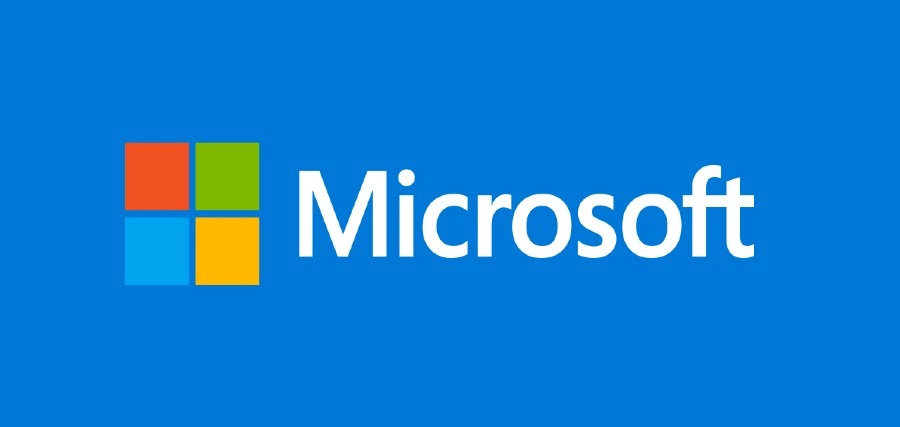Your cart is currently empty!
Microsoft: From MS-DOS to Global Tech Dominance

Founded in 1975 by Bill Gates and Paul Allen, Microsoft began as a small software company with a vision to place a computer on every desk and in every home. Over the decades, it has evolved into one of the most powerful and influential technology giants in the world. Microsoft’s journey from developing a basic interpreter for the Altair 8800 to becoming a trillion-dollar enterprise illustrates the trajectory of modern computing itself. Today, Microsoft is not just a software vendor—it’s a global ecosystem that powers devices, applications, and cloud infrastructure used by billions of people.
The Early Days and Rise of MS-DOS
The company’s initial breakthrough came when it secured a contract with IBM in the early 1980s to provide an operating system for the IBM PC. Microsoft acquired an existing system, modified it, and named it MS-DOS. This decision changed the course of computing history. MS-DOS became the foundational software for millions of personal computers worldwide, establishing Microsoft as a major player in the technology sector. Its licensing model—where IBM paid per copy—allowed Microsoft to retain rights to MS-DOS and offer it to other manufacturers, setting the stage for massive growth.
Windows Operating System and User Interface Revolution
Building upon its MS-DOS legacy, Microsoft introduced the Windows operating system in 1985. Initially a graphical shell, Windows evolved through various versions to become a full-fledged operating system. With the launch of Windows 3.0 and later Windows 95, the company redefined the personal computing experience. The combination of graphical interface, plug-and-play hardware integration, and broad third-party software support helped Windows achieve dominance in both consumer and business markets. For years, Windows remained the default operating system for PCs worldwide, and its successive versions continue to power millions of devices.
Microsoft Office and the Productivity Suite Empire
While Windows formed the core platform, Microsoft’s dominance was further entrenched through its Office Suite. Microsoft Word, Excel, and PowerPoint became indispensable tools for productivity in both personal and professional contexts. With each iteration, Microsoft Office added features, cloud integration, and AI-driven functionalities, cementing its position as the gold standard for document editing, spreadsheet analysis, and presentations. The move to Office 365, a subscription-based model, further transformed Office into a recurring revenue stream while enabling real-time collaboration and cloud storage through OneDrive.
Azure and the Cloud Computing Revolution
One of Microsoft’s most transformative ventures in recent years has been its foray into cloud computing. Launched in 2010, Microsoft Azure quickly evolved into one of the top cloud service providers globally, second only to Amazon Web Services. Azure offers a broad set of tools including virtual machines, AI and machine learning platforms, database services, and cybersecurity tools. Enterprises across the world leverage Azure for digital transformation, application development, and data analytics. Azure’s hybrid cloud capabilities and integration with Windows Server and Active Directory have made it a favorite among businesses transitioning to the cloud.
Surface Devices and Hardware Innovation
Microsoft’s venture into hardware initially met with mixed results, but the introduction of the Surface line redefined the company’s approach. The Surface Pro series combined portability with power, catering to professionals and creatives alike. Surface Laptops, Surface Studio, and Surface Duo have expanded Microsoft’s hardware offerings, creating a cohesive ecosystem between software and hardware. These devices demonstrate Microsoft’s ability to innovate beyond traditional software and appeal to users seeking design, functionality, and performance in a single product.
Xbox and the Gaming Universe
Microsoft’s influence also extends deeply into the gaming world through its Xbox division. First launched in 2001, the Xbox console challenged incumbents like Sony and Nintendo. Over the years, Xbox has built a loyal community, offering immersive gaming experiences and exclusive titles. The Xbox Game Pass subscription model has revolutionized how gamers access content, offering a wide library of games for a flat fee. Microsoft’s acquisition of leading game studios, including Bethesda and Activision Blizzard, signals its commitment to being a dominant force in the future of interactive entertainment.
LinkedIn and Strategic Acquisitions
In 2016, Microsoft acquired LinkedIn, the world’s largest professional networking platform, for over $26 billion. This move strengthened Microsoft’s position in the enterprise market by integrating LinkedIn’s vast user base and data insights with its productivity and cloud tools. Beyond LinkedIn, Microsoft’s acquisitions include GitHub, Nuance Communications, and Mojang (creator of Minecraft). Each acquisition has expanded Microsoft’s reach into different segments—whether it’s developers, healthcare, or younger demographics—and illustrates the company’s strategy of growing through smart and synergistic acquisitions.
Embracing Artificial Intelligence and Future Technologies
Microsoft has made substantial investments in artificial intelligence, embedding AI across its entire product suite. From intelligent assistants in Microsoft 365 to Azure-based machine learning tools, AI is shaping the future of how people work and interact with technology. The company’s collaboration with OpenAI has further deepened its role in advancing large language models and generative AI, bringing new possibilities to both developers and enterprises. Microsoft’s future roadmap includes advancements in quantum computing, edge computing, and sustainability through green data centers and AI-driven energy optimization.
Market Capitalization and Financial Strength
As of the latest figures, Microsoft’s market capitalization stands around $2.5 trillion, placing it among the most valuable companies globally. The company’s financial model is diverse, with revenue streams from software licensing, subscriptions, cloud services, gaming, hardware, and advertising. This multi-pronged approach has made Microsoft resilient during market fluctuations and economic slowdowns. Its commitment to innovation, strategic partnerships, and customer-focused design continues to fuel steady growth across multiple verticals.
Corporate Culture and Leadership
Under the leadership of CEO Satya Nadella, Microsoft has undergone a cultural shift toward openness, collaboration, and cloud-first innovation. Nadella’s vision has transformed Microsoft from a desktop software giant into a cloud-centric technology powerhouse. The company encourages a growth mindset, continuous learning, and inclusive leadership. These values not only influence internal dynamics but also reflect in how Microsoft engages with developers, partners, customers, and global communities.
Commitment to Sustainability and Social Impact
Microsoft is also leading the charge in corporate responsibility, pledging to become carbon negative by 2030. Through investments in clean energy, water conservation, and ethical AI, the company is working toward building a more sustainable future. Microsoft supports initiatives in education, accessibility, and digital equity, reflecting a broader mission beyond profit. By aligning its business goals with societal needs, Microsoft continues to set standards for responsible innovation.
Final Thoughts on Microsoft’s Global Impact
From its humble beginnings as a software provider to its current status as a global technology leader, Microsoft has continually reinvented itself to stay ahead of the curve. Its impact spans across personal computing, cloud infrastructure, digital transformation, gaming, social networking, and AI. The company’s ability to adapt, scale, and lead in multiple domains makes it a cornerstone of modern digital life. As it invests in the technologies of tomorrow, Microsoft remains a symbol of innovation, reliability, and transformation on a global scale.
For strategic insights into tech giants like Google , Apple and astrology-driven financial forecasts, visit RajeevPrakash.com

Mr. Rajeev Prakash
Rajeev is a well-known astrologer based in central India who has a deep understanding of both personal and mundane astrology. His team has been closely monitoring the movements of various global financial markets, including equities, precious metals, currency pairs, yields, and treasury bonds.
Featured Post
Financial Astrology Terminal
The Financial Astrology Terminal is a web platform that combines real-time U.S. market data (S&P 500, Nasdaq, Dow, Russell, key stocks and commodities like gold and silver) with planetary cycles, giving traders and investors astro-timing signals on top of normal charts and analysis.
